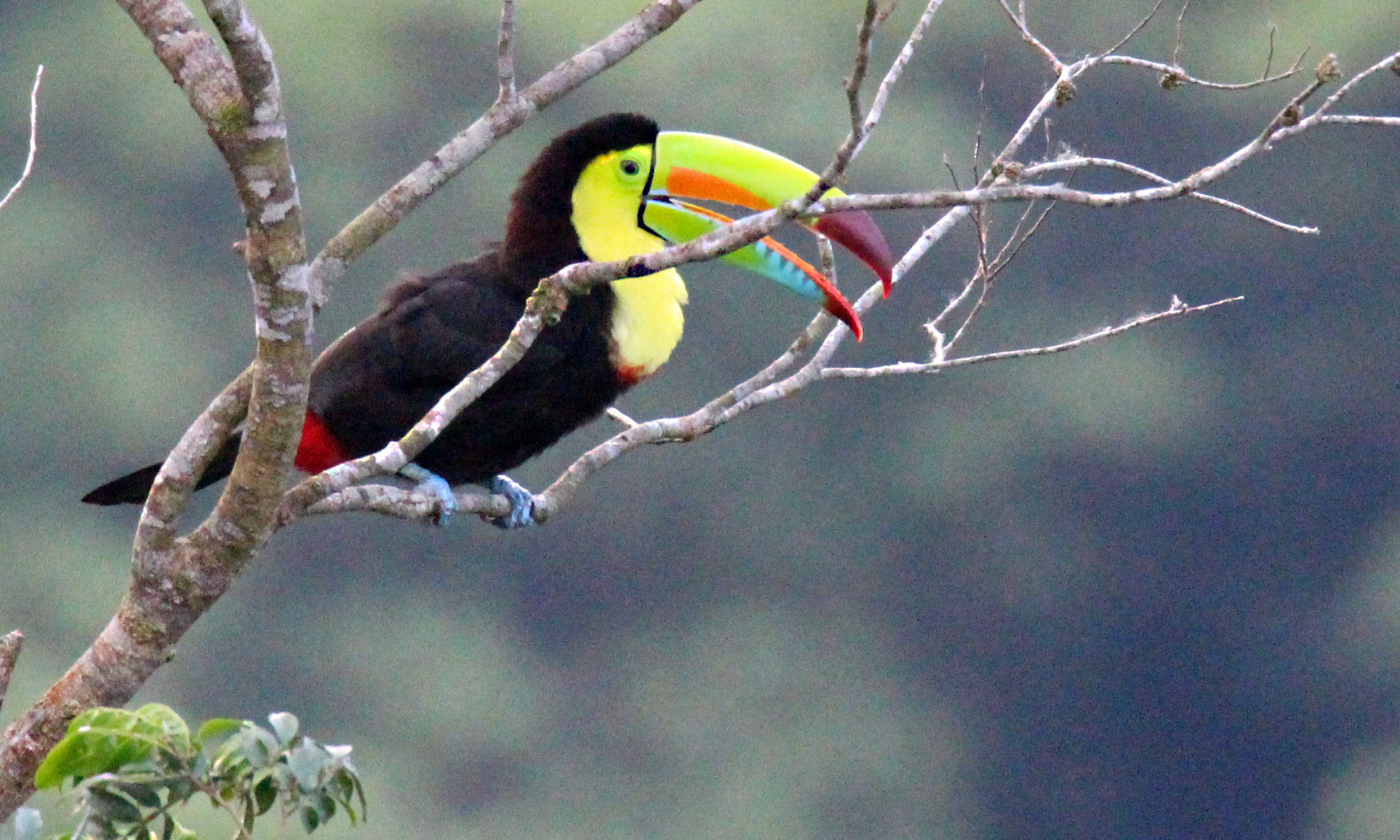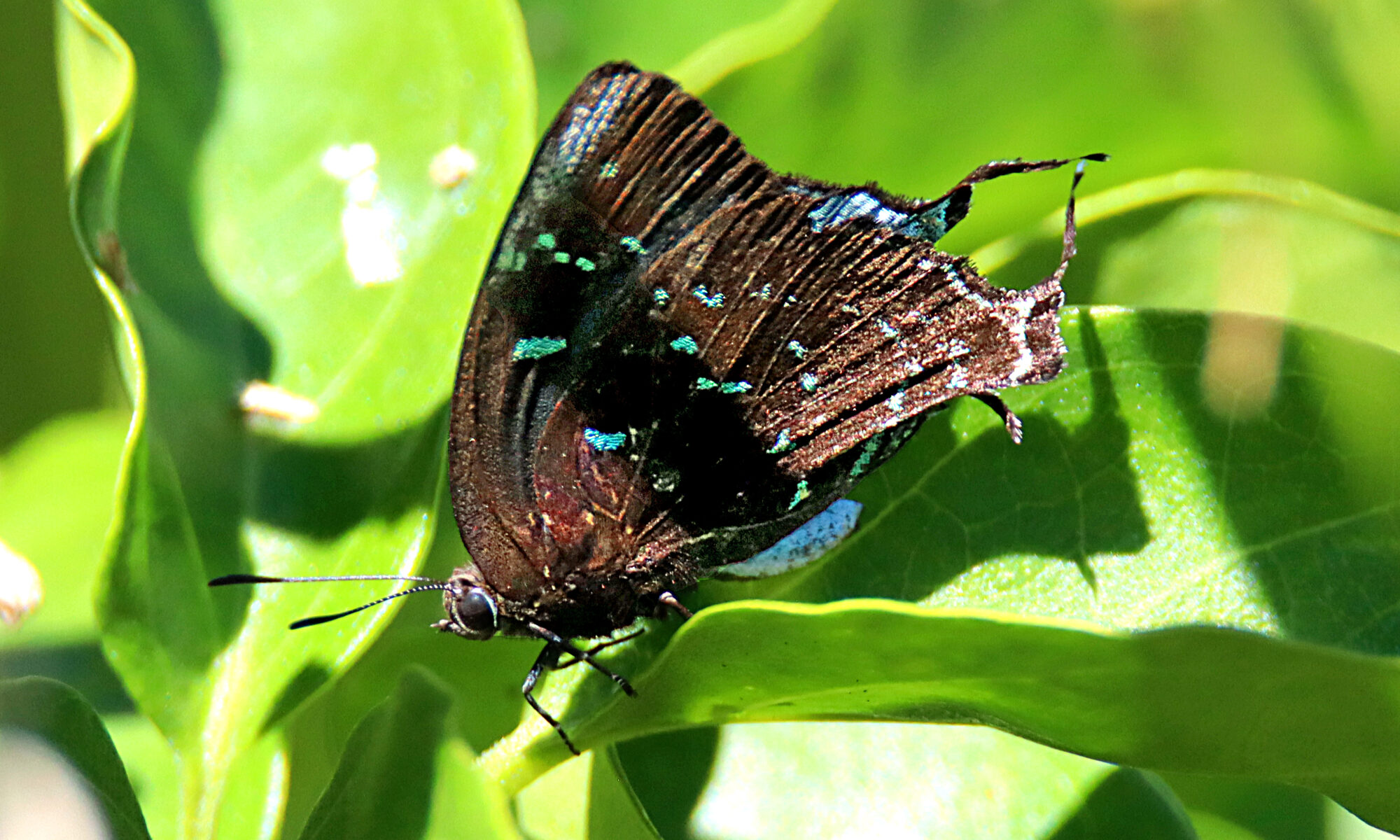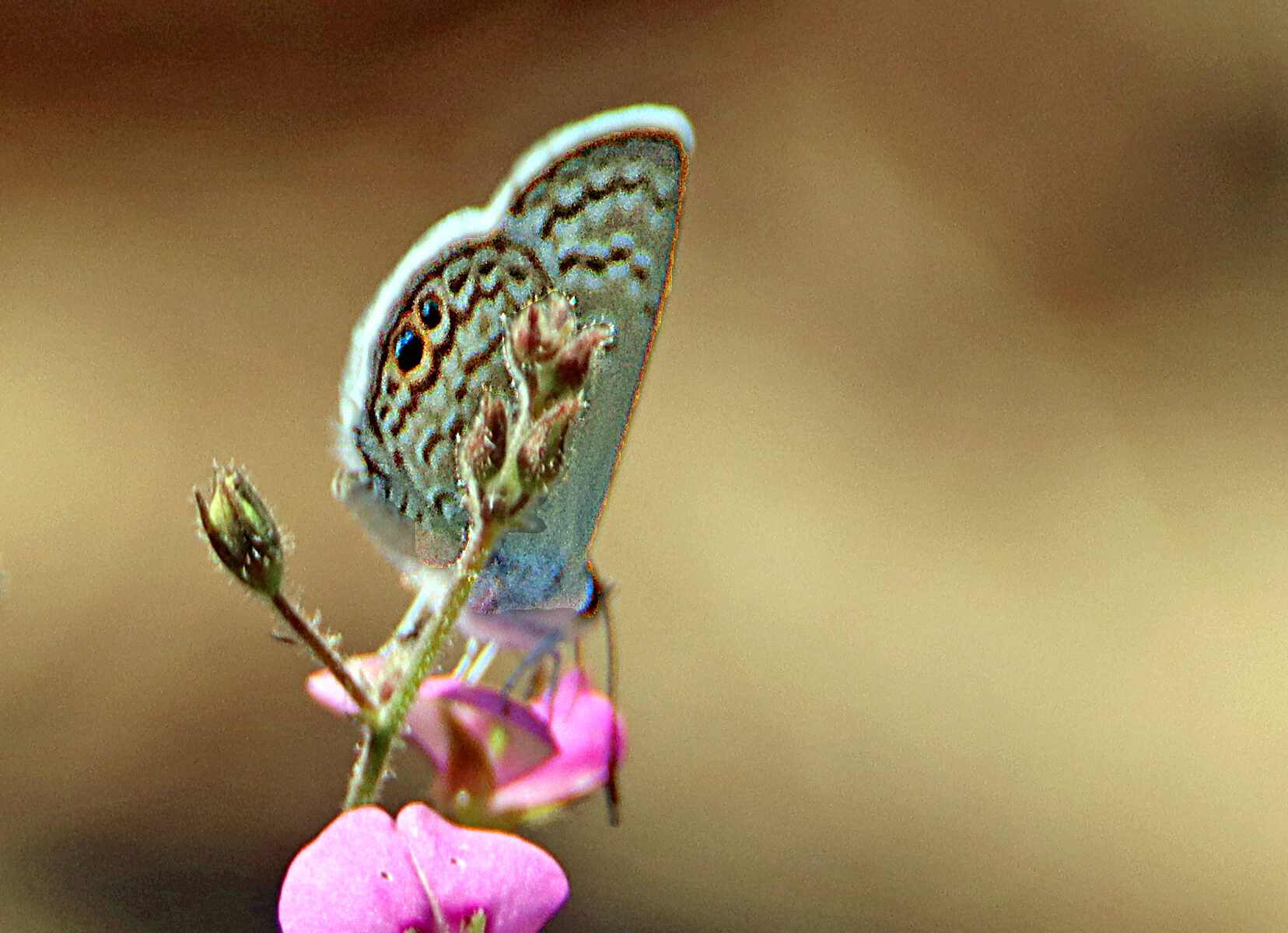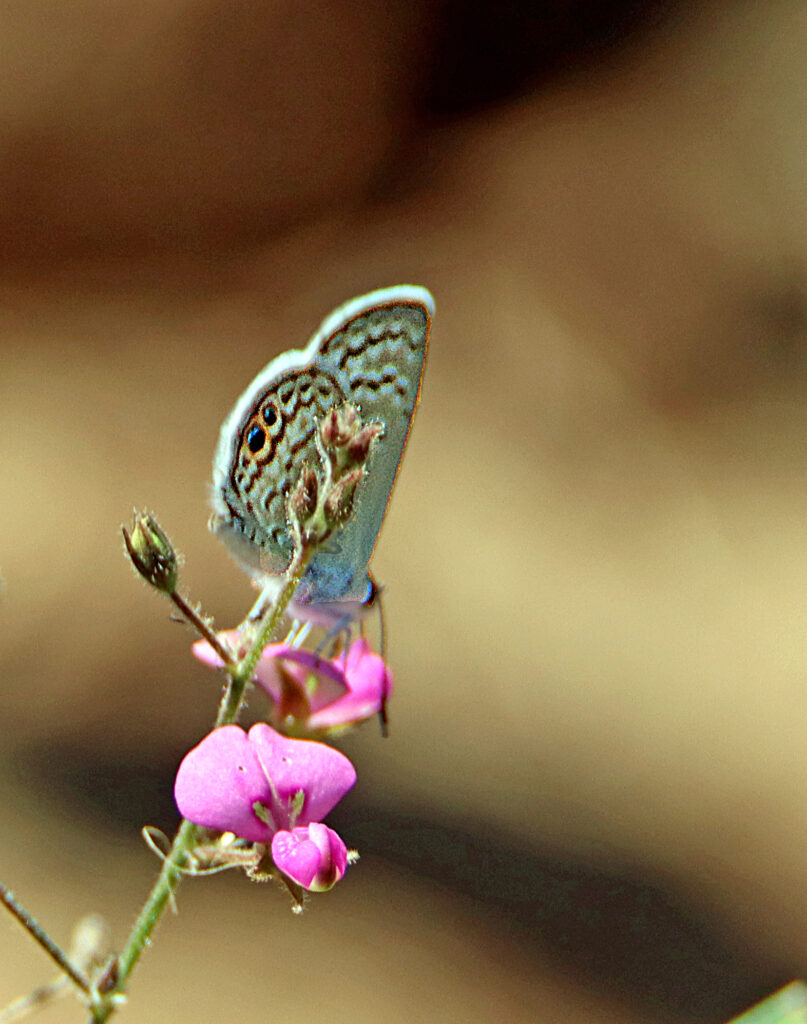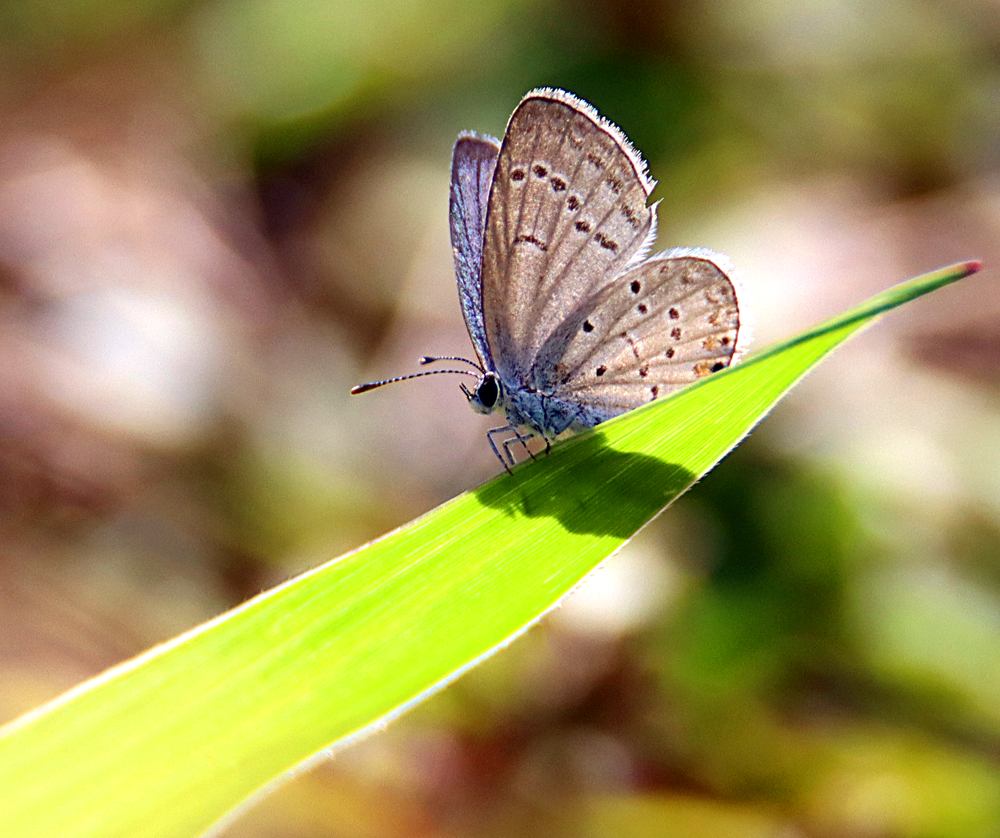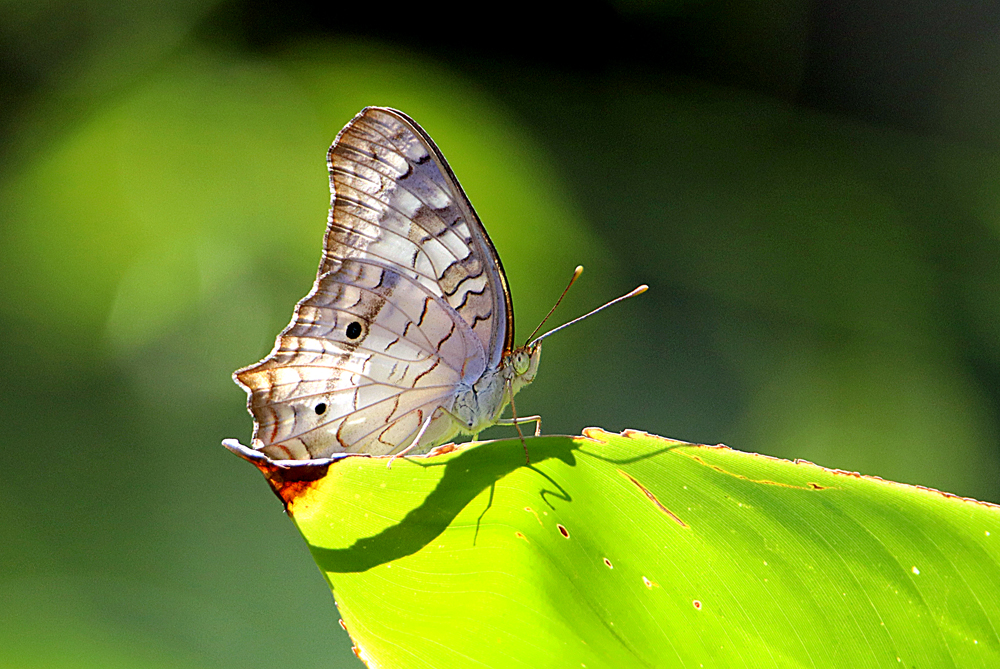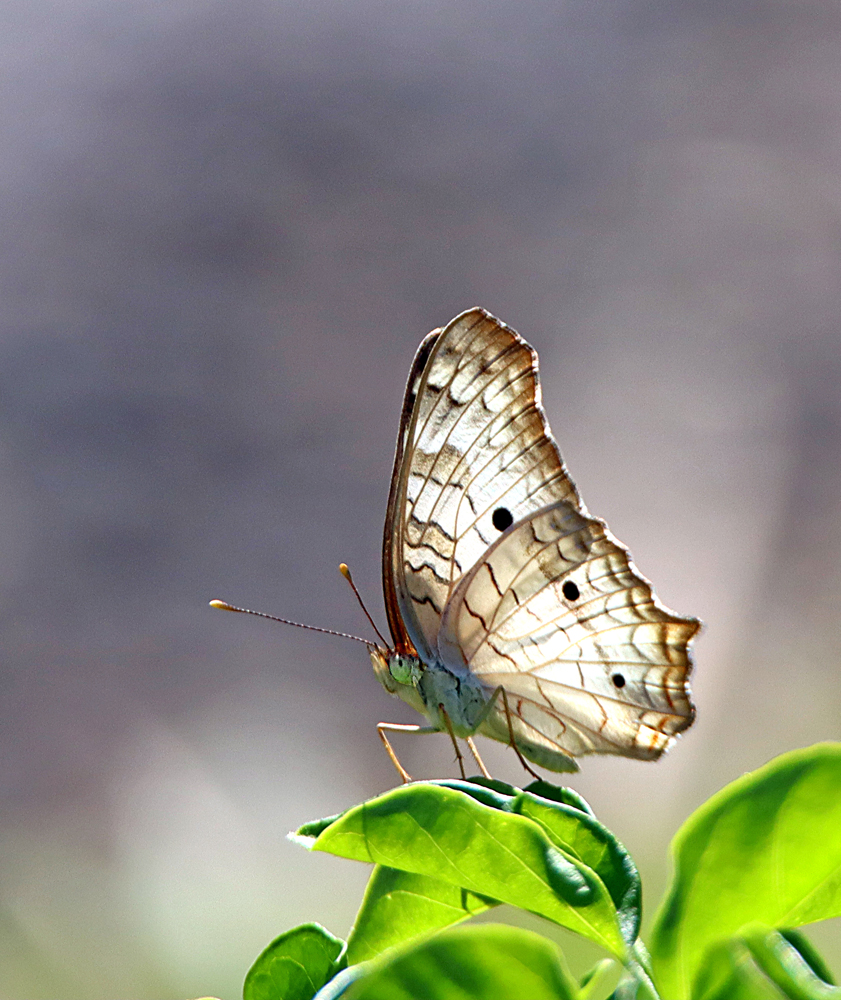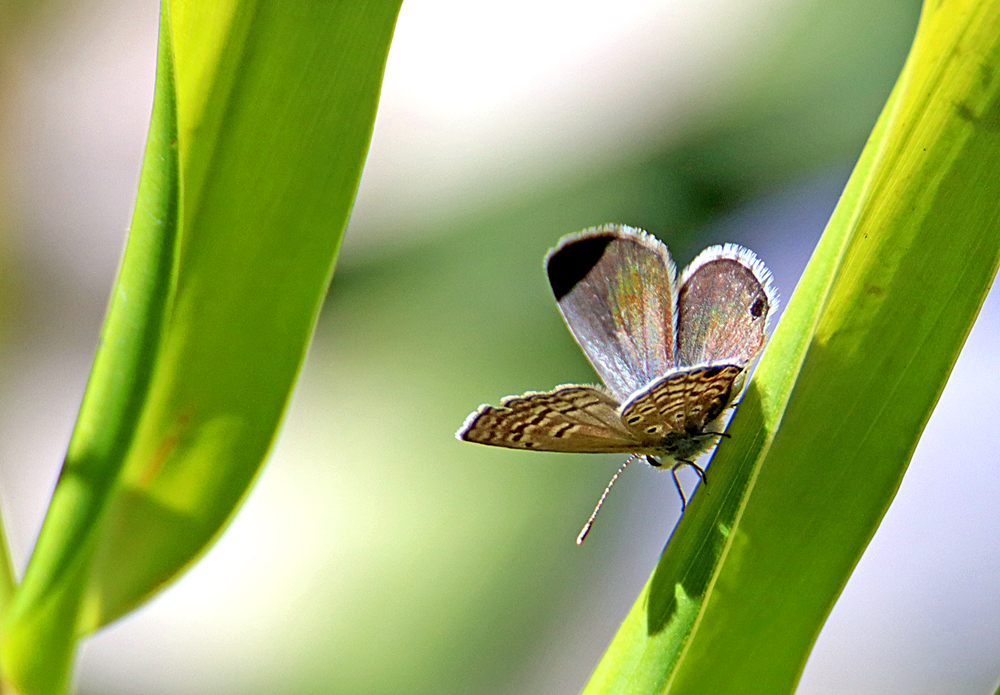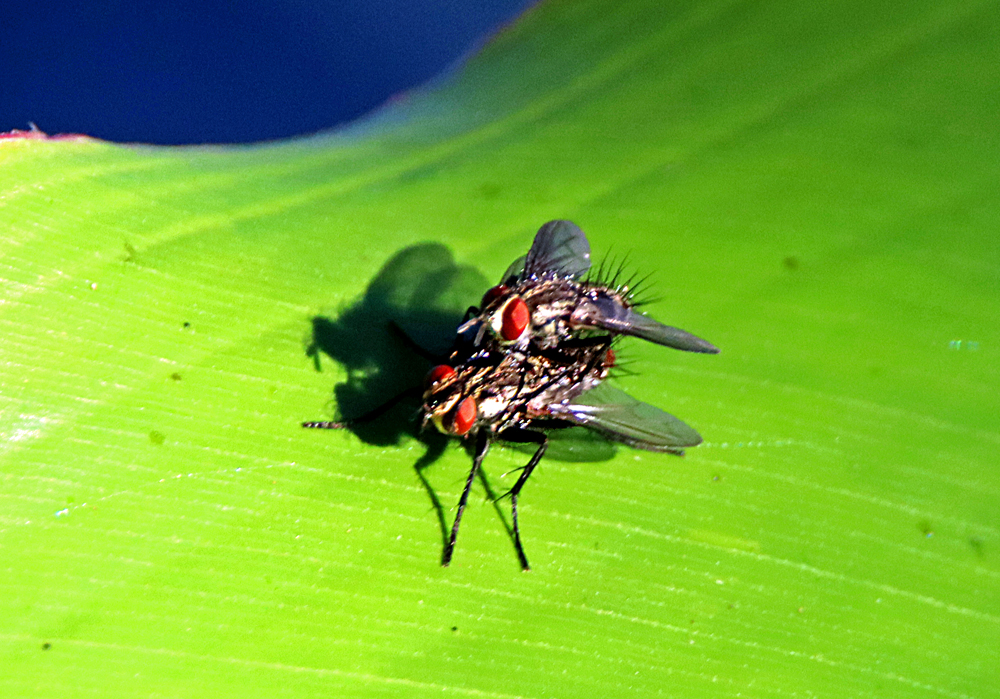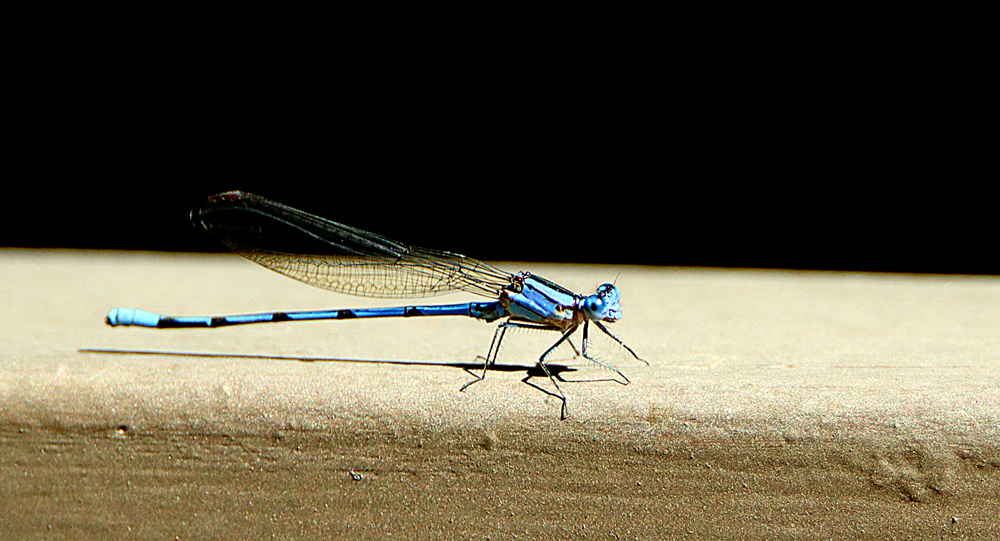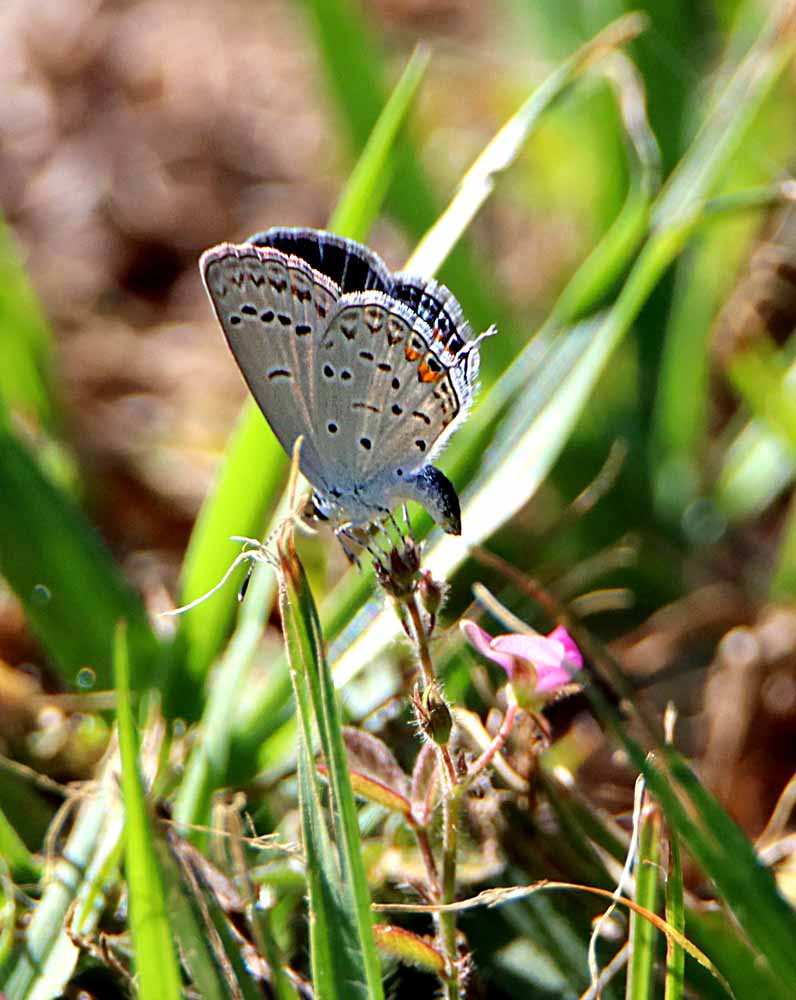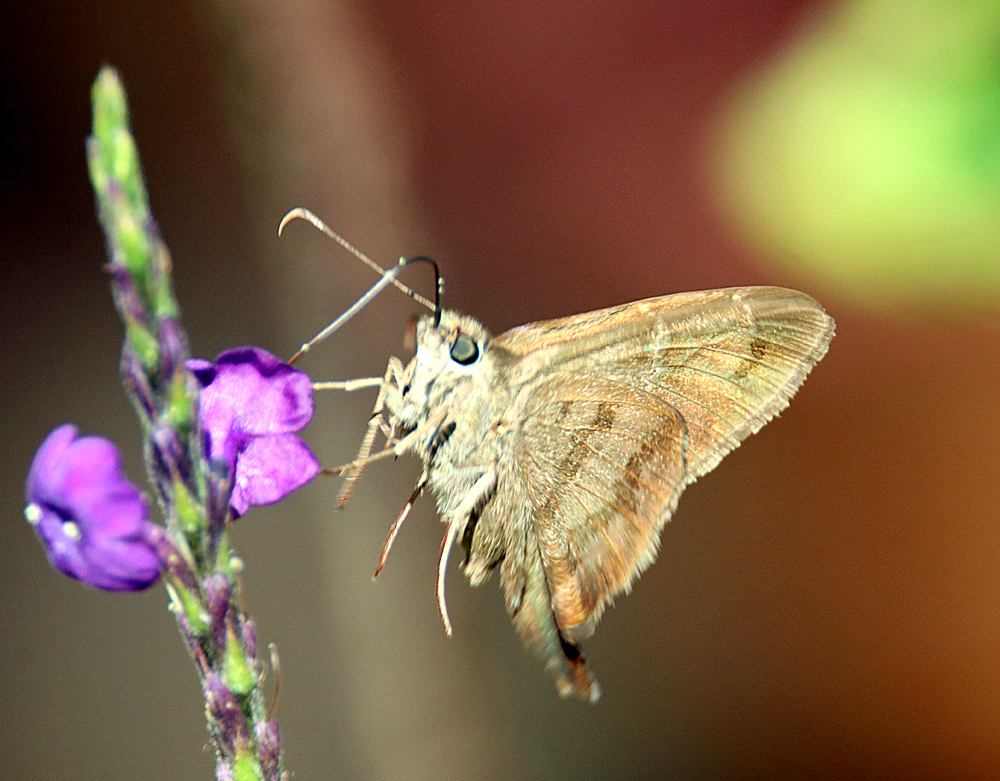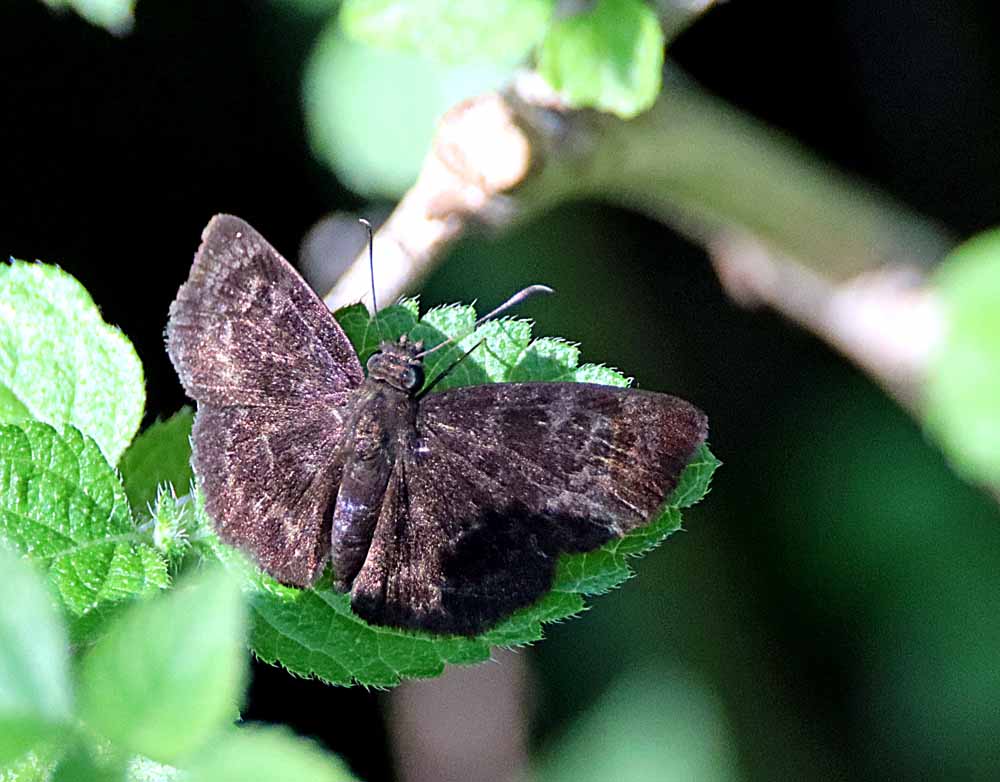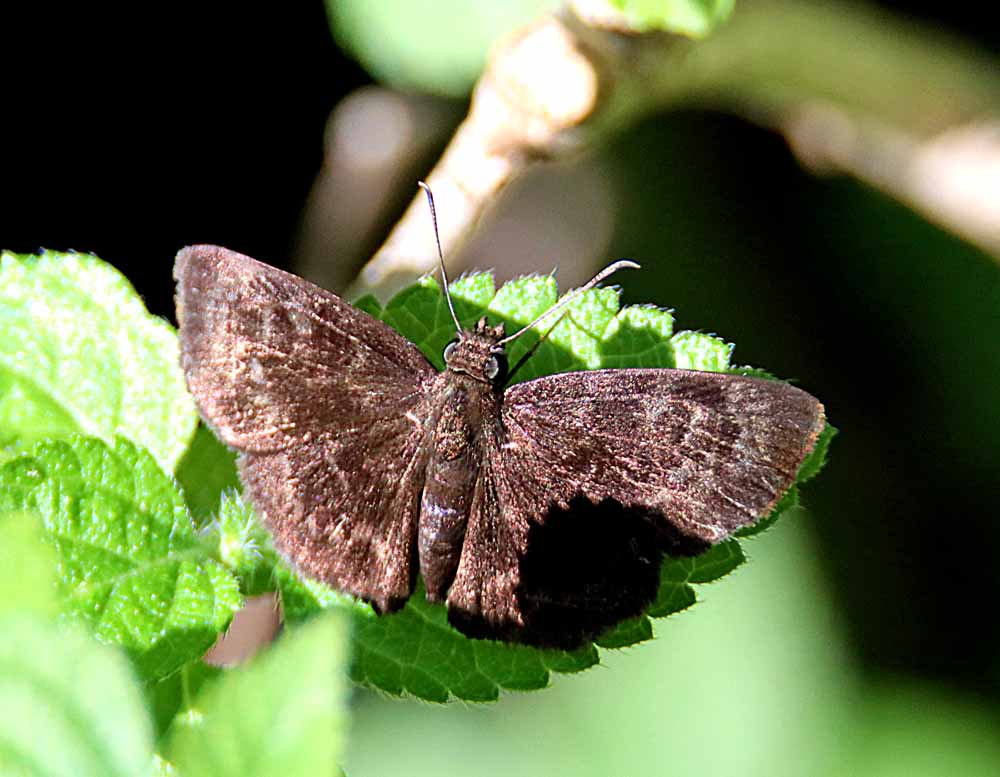Instead of such an obvious “Common Name” (above) the source website names that I have to use for BAMONA, which doesn’t already have this butterfly in their database yet, is whatever BOA (butterfliesofamerica) has in their listing and their “common name” is Augustinula Hairstreak with the scientific name of Denivia augustinula. So that is the ID you will find in my personal gallery (which I try to keep in sync with butterfliesandmoths). In my gallery I have more photos from this past Sunday morning’s new discovery for me at Augustinula Hairstreak Gallery where there is an interesting rear shot with a long shadow of the insect. 🙂
For the serious student of butterflies, the Glassberg book uses the common name of “Blue-spotted Greatstreak” and another scientific name used online: Theritas augustinula. Plus, for what it is worth, I found a 3rd scientific name being used online of Thecla augustinula. :-) You can see why identification sometimes drives me crazy! 🙂 Just one photo here and you can go to my gallery for more.
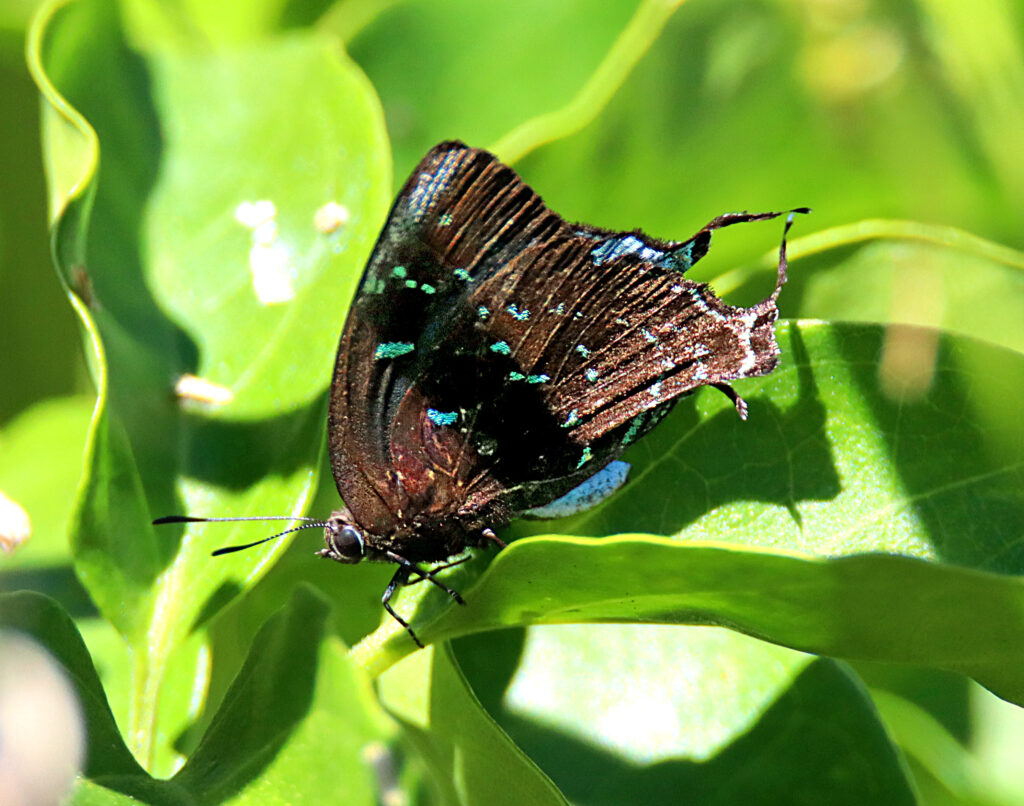
¡Pura Vida!
